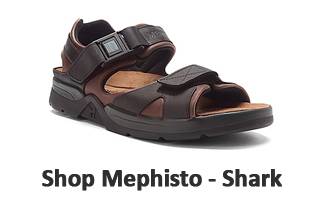Heel Pain: Symptoms, Causes & Treatment
Heel pain is a very common foot problem. You usually experience heel pain under the heel (plantar fasciitis) or just behind it (Achilles tendinitis), where the Achilles tendon connects to your heel bone. Even though, heel pain is rarely a  symptom of a serious condition, it can intervene with every-day activities.
symptom of a serious condition, it can intervene with every-day activities.
What Are Common Causes of Heel Pain?
Heel pain has a number of causes that are typically associated with overuse of the heel bone. You can strain your heel by pounding your feet on hard surfaces, being overweight or wearing shoes that do not fit properly. In most cases, heel pain is most often caused by plantar fasciitis. Which is an inflammation of the band of tissue that extends from the heel to the toes.
Plantar Fasciitis
Plantar fasciitis is one of the most common causes of foot pain; which involves pain and inflammation of the thick band of tissue on the bottom of your foot, called the plantar fascia. Those who are on their feet a great deal of time, without the best support can fall victim to plantar fasciitis. Plantar fasciitis is particularly common in runners, overweight people and those who wear shoes without adequate support. Repetitive motion like running or added pressure from weight gain can damage or tear the plantar fascia; causing inflammation and pain. Click here for best stretching exercises for plantar fasciitis.
Heel Spurs
Heel spurs develop as an abnormal growth of the heel bone. Most commonly, calcium deposits form when the plantar fascia pulls away from the heel area, causing a bony protrusion, or heel  spur to develop. Heel spurs can cause extreme pain in the rear foot, especially while standing or walking.
spur to develop. Heel spurs can cause extreme pain in the rear foot, especially while standing or walking.
Achilles Tendinitis
Achilles tendinitis is a common condition that causes pain along the back of your leg near the heel, which is associated with overuse and degeneration of the Achilles tendon. The Achilles tendon is the band of tissue that connects calf muscles at the back of the lower leg to your heel bone. Many Achilles tendon injuries are caused by tendinitis, in which the tendon becomes swollen and painful. Achilles tendinitis most commonly occurs in runners who recently increased the intensity of their runs, in people who step up their level of physical activity too quickly, and wearing high heels
Excessive Pronation (Overpronation)
Excessive pronation is a condition where the foot rolls inward; and the ligaments and tendons at the back of the heel are stretched too much. This can occur when injuries to the back, hips, or knees change the way you walk.
Tarsal Tunnel Syndrome
Tarsal Tunnel Syndrome is cause by compression of the posterior tibial nerve as it courses from the posterior aspect of the medial malleolus toward the anteromedial aspect of the calcaneus. Compression of the posterior tibial nerve can cause you to feel a burning sensation. People with  Tarsal Tunnel Syndrome have difficulty pinpointing their pain. Pain is most intense when standing or walking after long periods of rest.
Tarsal Tunnel Syndrome have difficulty pinpointing their pain. Pain is most intense when standing or walking after long periods of rest.
Bursitis
Bursitis is a painful condition that affects the small fluid-filled sacs, called bursae, which cushion
the bones, tendons, and muscles near your joints. Bursitis is the inflammation of bursae and typically occurs near joints that perform frequent repetitive motions. If you have Bursitis you may feel achy or stiff. Your joints would hurt more when you touch them or are weight barring, and may be swollen and red. Any repetitive motion such as walking, running, or riding a bike can increase your chances of developing Bursitis.
How do you treat heel pain?
Heel pain can be treated in many varies ways, depending on the severity and cause of your pain. If you have only mild pain you can try resting for a few days and taking an over the counter anti-inflammatory or pain reliever medication. If you have more severe pain you should look into getting more supportive shoes and accessorizing them with insoles designed to your specific foot type and need. In severe cases, surgery is required to relieve the pain. However, more often than not all that is necessary to alleviate pain is supportive shoes.
What shoes are right for me?
We carry a wide variety of shoes and sandals for heel pain. Many of the supportive shoes and sandals we carry have great support and accommodate orthotics which is very helpful for heel pain. When picking out the right shoe there are a couple things you need to consider: what your daily tasks consist of, your foot type and where most of your pain is located.
The best shoes for heel pain:
 |
 |
 |
 |
The best sandals for heel pain:
 |
 |
 |
 |
What are the best arch supports for heel pain?
We have a wide variety of arch supports for heel pain. The best arch support for heel pain will control pronation, and be adjustable to meet your foot needs. Custom molded insoles are the best insoles for heel pain; which have rear foot postings to help control the amount the arch falls when you take a step. We have over the counter arch supports and custom molded orthotics which helps reduce the pain associated with heel pain. Make an appointment today with a specialist to find out which heel pain support is best for you!
The best arch supports for heel pain:
 |
 |
 |
 |

Jerick Sobie
Since 2005, I have been a dedicated small business owner specializing in footwear retail. With over 20 years of experience, my business partner and I have helped customers find the perfect shoes that combine style, comfort, and quality. Our expertise extends beyond local sourcing—we have traveled internationally to discover high-quality footwear that meets our customers’ needs. In addition to running my business, I have participated in numerous health fairs and educational seminars, sharing my knowledge on proper footwear and foot health. Committed to providing exceptional service, We carefully curate our selections to ensure the best fit and support for every customer.





















